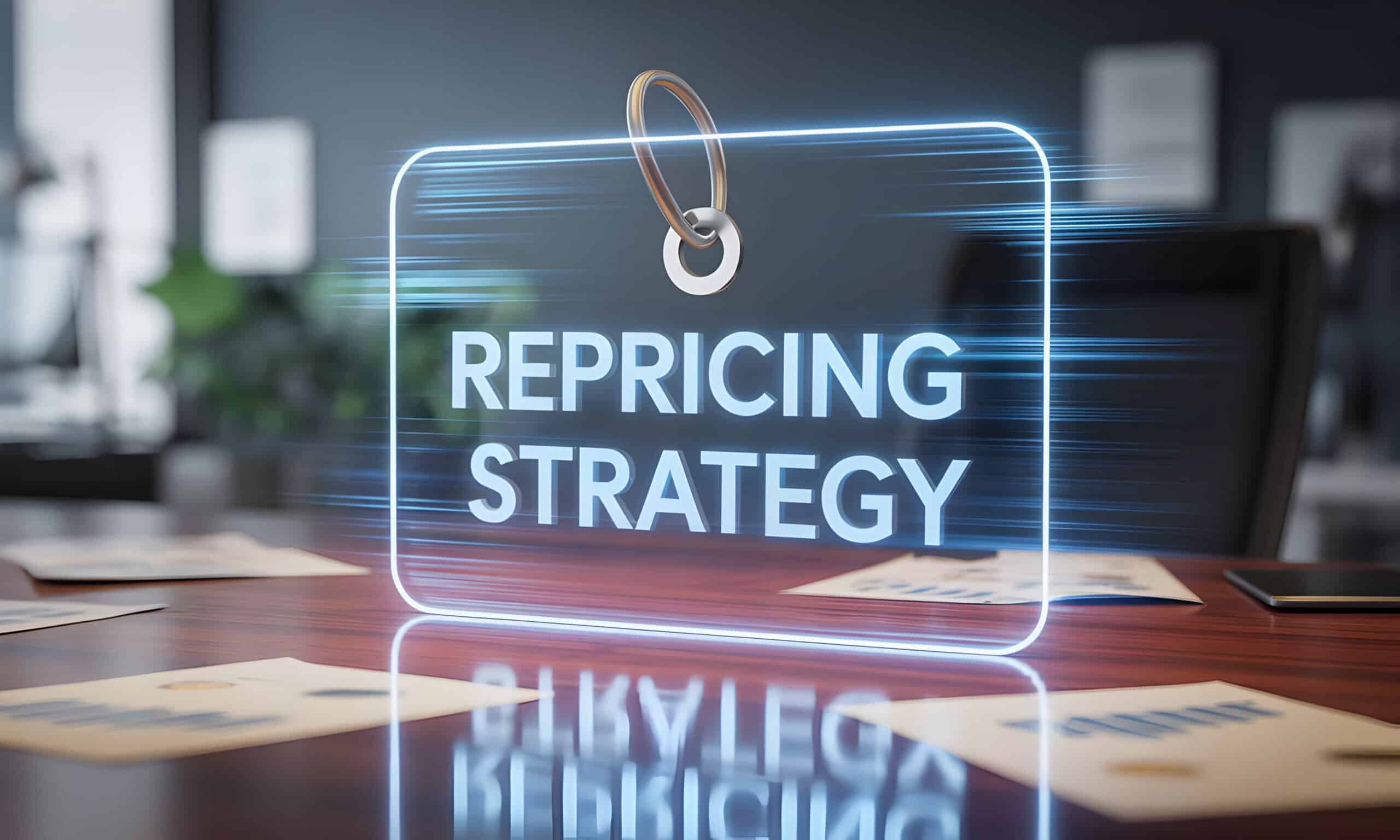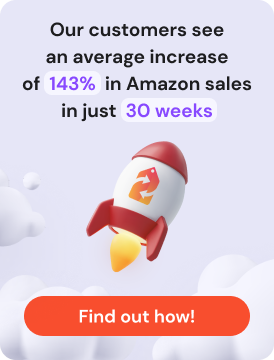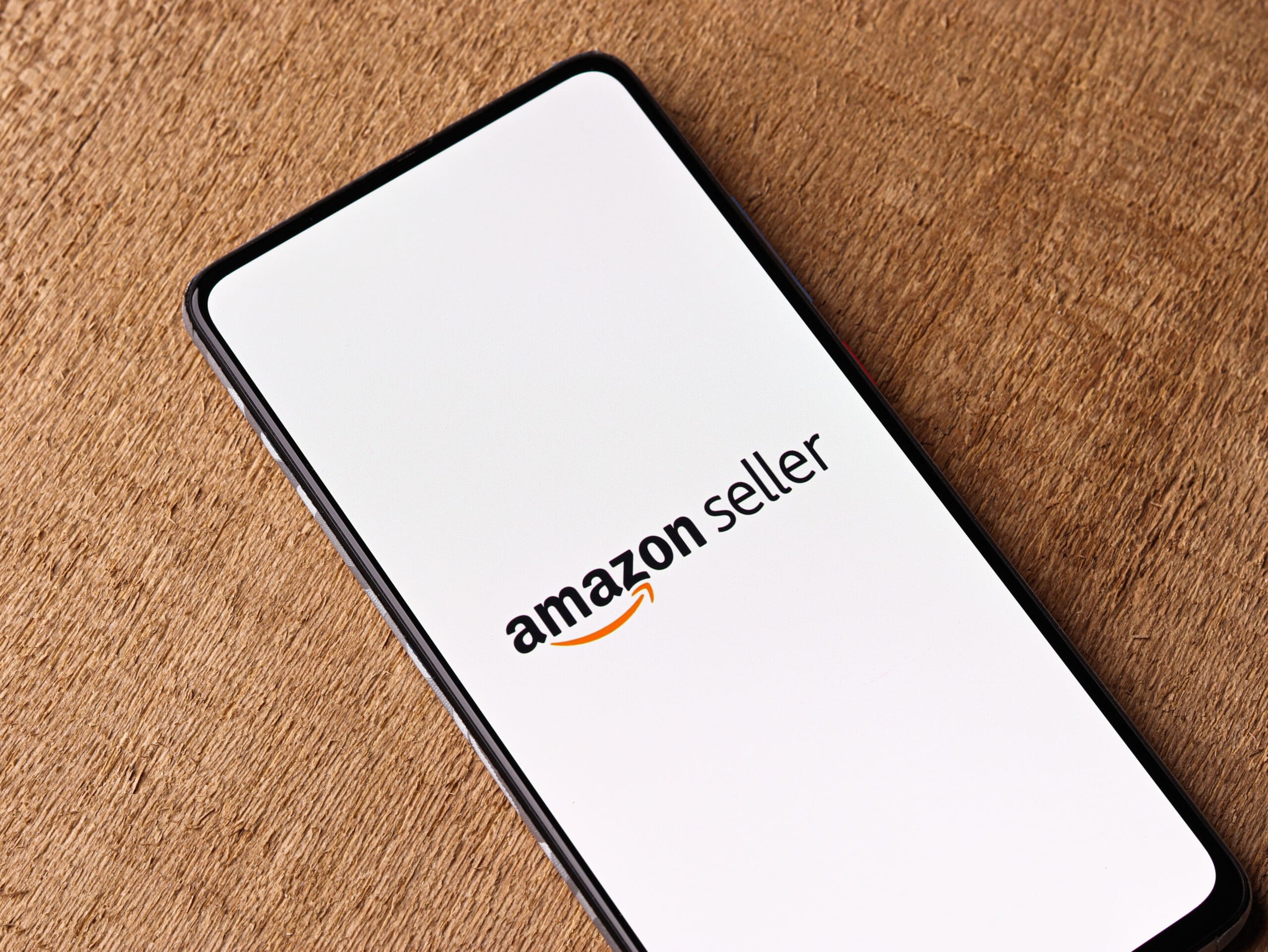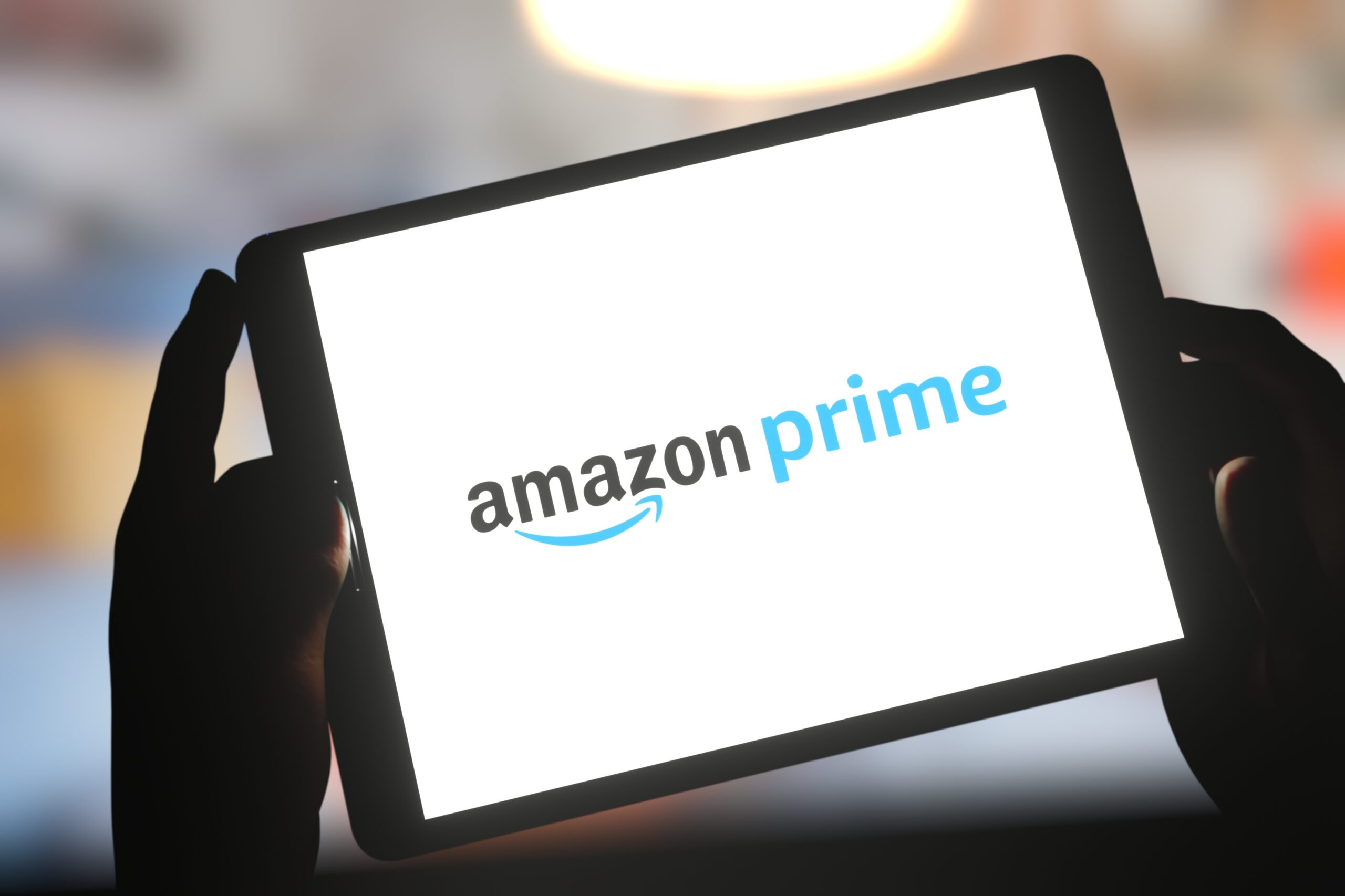Want to boost sales without spending more on ads? These 10 repricing strategies helped real sellers increase sales by up to 156%. From AI pricing to inventory-aware logic, see how smart automation drives real results—backed by case studies, screenshots, and proven frameworks for every type of marketplace business.
Why Pricing Strategy Matters More Than Ever in 2025
In today’s hypercompetitive ecommerce landscape, winning the Buy Box isn’t just about having the lowest price anymore. With thousands of sellers competing for the same customers on Amazon, Walmart, and eBay, intelligent pricing automation has become the difference between scaling successfully and racing to the bottom.
The statistics speak for themselves. Sellers who implement strategic repricing see an average sales increase of 89%, with top performers experiencing growth rates as high as 156%. But here’s the key insight: these results aren’t achieved by simply undercutting competitors. They come from smart, data-driven strategies that balance competitiveness with profitability.
This comprehensive guide breaks down 10 proven repricing strategies that real sellers have used to transform their businesses. Each strategy includes specific tactics, recommended tools, and actual performance metrics from sellers who’ve implemented them successfully. Whether you’re managing 50 SKUs or 5,000, you’ll find actionable insights to apply to your business immediately.
The 10 Repricing Strategies That Drive Real Results
1. AI-Driven Buy Box Targeting
What It Is: Artificial intelligence-powered repricing engines analyze hundreds of variables in real-time, including competitor behavior patterns, historical Buy Box data, customer demand signals, and seasonal trends. Unlike rule-based systems, AI repricers continuously learn and adapt their strategies based on actual marketplace performance.
When to Use It: This strategy works exceptionally well for FBA sellers with catalog sizes of 500+ SKUs who compete in crowded categories. It’s particularly effective when managing products with volatile pricing environments where manual adjustments would be impossible to maintain.
Tool Used: Repricer.com’s AI-powered engine combines machine learning algorithms with real-time marketplace data to make intelligent pricing decisions every minute of the day.
Real-World Result: A consumer electronics seller implemented AI-driven repricing on their catalog of 1,247 SKUs. Within 60 days, they achieved a 92% Buy Box win rate, up from 68%. More importantly, their revenue increased by 137% while maintaining their target profit margins. The AI system identified optimal pricing windows that human analysis had missed, particularly during evening hours when competitor activity decreased. According to Amazon’s seller performance metrics, Buy Box ownership is one of the strongest predictors of sales success.
Key Takeaway: AI repricing removes emotion and guesswork from pricing decisions. The algorithm doesn’t panic during competitive pressure or leave money on the table when demand is high. It simply optimizes for your specific goals, whether that’s maximizing revenue, protecting margins, or increasing market share.
2. Minimum Price Guardrails
What It Is: Minimum price guardrails set absolute floor prices below which your repricing software will never drop, regardless of competitive pressure. These guardrails can be set as fixed dollar amounts, percentage margins above cost, or ROI thresholds that protect your business fundamentals.
When to Use It: Every seller should implement this strategy from day one. It’s especially critical for private label sellers, those carrying inventory debt, and anyone operating on thin margins. Without guardrails, aggressive competition can quickly erode profitability to unsustainable levels.
Tool Used: Repricer.com allows sellers to set sophisticated minimum price rules at both the catalog level and individual SKU level, with options for margin-based floors and time-based overrides.
Real-World Result: A home and garden supplier was losing the Buy Box frequently but refused to sacrifice margins. By implementing strategic minimum prices set at $3 above their landed costs, they maintained 75% Buy Box ownership while protecting profitability. Over six months, this translated to $47,000 in protected margin that would have been lost in a race to the bottom. Their volume decreased by only 8%, while profit increased by 34%. This aligns with research from Harvard Business Review showing that strategic pricing outperforms simple price-cutting.
Key Takeaway: Winning the Buy Box at a loss isn’t winning at all. Smart guardrails let you stay competitive without destroying your business model. Sometimes the best pricing decision is knowing when not to compete.
3. Inventory-Aware Dynamic Pricing
What It Is: This strategy automatically adjusts pricing based on your current inventory levels and velocity. As stock decreases, prices can increase to slow sales velocity and maximize revenue on remaining units. Conversely, aging inventory can be automatically marked down to accelerate turnover and free up capital.
When to Use It: Perfect for seasonal sellers, businesses with storage fees, and anyone managing perishable or time-sensitive inventory. It’s particularly valuable for fourth-quarter sellers who need to clear inventory before long-term storage fees kick in.
Tool Used: Repricer.com’s inventory-aware pricing features integrate directly with Seller Central to adjust prices based on real-time stock levels and storage age.
Real-World Result: A toy seller entered December with 347 units of slow-moving inventory nearing the long-term storage fee threshold. By implementing automated markdown rules that gradually decreased prices as the deadline approached, they sold out the entire stock in just 9 days. The calculated markdowns cost them 12% in margin, but they avoided $2,180 in storage fees and freed up $18,500 in working capital for new inventory.
Key Takeaway: Dead inventory costs money in storage fees and opportunity cost. Inventory-aware pricing turns potential losses into strategic clearance sales that protect your cash flow and storage efficiency.
4. Time-of-Day Repricing
What It Is: Time-based repricing adjusts your prices automatically based on the time of day, day of week, or specific calendar dates. This strategy capitalizes on patterns in competitor activity, customer shopping behavior, and marketplace traffic fluctuations throughout the day.
When to Use It: Best for sellers competing against part-time sellers or international competitors in different time zones. Also effective for products with predictable demand curves, like lunch items that sell during midday or evening entertainment products. Learn more about seasonal trends and pricing adjustments.
Tool Used: Repricer.com’s scheduling features allow sellers to create time-based pricing rules that activate and deactivate automatically based on any schedule.
Real-World Result: A kitchen supplies seller noticed that several major competitors only adjusted prices during business hours (9 AM – 5 PM EST). By implementing a strategy that slightly increased prices during off-hours when competition was dormant, they captured premium prices on 23% of their daily sales. This resulted in an 18% overall profit margin improvement without sacrificing volume. During peak competition hours, prices returned to aggressive levels to maintain Buy Box share.
Key Takeaway: The marketplace never sleeps, but many sellers do. Time-based repricing helps you capitalize on the natural rhythms of competitive activity and customer behavior patterns.
5. Velocity-Based Price Increases
What It Is: This strategy monitors your sales velocity and automatically increases prices on fast-moving SKUs that are selling above expected rates. If a product is flying off the shelves, the algorithm gradually raises prices until it finds the optimal price point where demand meets your profit goals. For a deeper dive, check out our guide on velocity-based repricing rules.
When to Use It: Essential for trend-based products, seasonal items experiencing unexpected demand, and any situation where you’ve underpriced relative to market demand. It’s also valuable for private label sellers testing new price points on successful products.
Tool Used: Repricer.com’s velocity triggers can detect sales spikes and adjust pricing automatically based on customizable thresholds and increment rules.
Real-World Result: A health and personal care seller listed a new product at a conservative price point to test market demand. Within three days, sales velocity indicated they had significantly underpriced the item. The velocity-based repricing algorithm gradually increased the price over two weeks, testing customer price sensitivity. The result: a 156% increase in total sales revenue with a 24% higher average sale price. The product still sold out in 28 days instead of the projected 45, but at substantially higher margins.
Key Takeaway: Leaving money on the table is just as damaging as pricing too high. Velocity-based repricing ensures you’re always charging what the market will bear, maximizing revenue on your winners.
6. Competitor Undercut Rules (By Percentage, Not Cents)
What It Is: Instead of undercutting competitors by fixed amounts like $0.01 or $0.50, percentage-based undercut rules calculate your price as a percentage below the competition. This maintains proportional competitiveness across products at different price points and prevents excessive margin erosion on low-cost items. This approach helps you avoid price wars on Amazon.
When to Use It: Highly effective for sellers with diverse catalogs spanning multiple price ranges. It’s especially valuable when competing against premium brands where maintaining a specific percentage discount positions you as the value alternative without appearing cheap.
Tool Used: Repricer.com allows sellers to set percentage-based undercut rules with maximum and minimum price bounds to maintain strategic positioning.
Real-World Result: A beauty products reseller was competing against four established brands in a competitive category. Instead of the typical $0.01 undercut strategy, they implemented a 7% below lowest competitor rule with a minimum price floor. This positioned them as consistently more affordable without appearing discount-quality. Over six months, they captured 61% Buy Box share against larger competitors and maintained an average 22% profit margin. Their pricing was competitive enough to win while premium enough to maintain brand perception.
Key Takeaway: A penny difference doesn’t always matter to customers, but it matters greatly to your margins. Percentage-based undercutting maintains competitive positioning across your entire catalog while protecting profitability.
7. Repricing by Fulfillment Method
What It Is: This advanced strategy sets different pricing rules based on whether competitors are using FBA, FBM, or Amazon’s other fulfillment options. Since FBA listings typically have advantages in the Buy Box algorithm, FBM sellers can use strategic pricing to remain competitive despite the fulfillment disadvantage.
When to Use It: Critical for FBM sellers competing in FBA-dominated categories. Also useful for hybrid sellers who stock some products in Amazon warehouses while fulfilling others from their own facilities, allowing differentiated strategies for each method.
Tool Used: Repricer.com’s fulfillment-aware repricing distinguishes between FBA and FBM competitors when making pricing decisions, allowing sophisticated competitive strategies.
Real-World Result: A new FBM seller entering a category dominated by FBA competitors needed a strategy to win Buy Box time despite their fulfillment disadvantage. By implementing rules that priced 8-12% below FBA competitors while matching or slightly beating other FBM sellers, they achieved 32% Buy Box ownership within 90 days. Their margins remained healthy because they avoided the FBA fees, and the pricing differential was just enough to overcome the fulfillment method handicap in Amazon’s algorithm. Understanding Amazon’s fulfillment requirements is crucial for this strategy.
Key Takeaway: Not all competitors are equal in Amazon’s eyes. Fulfillment-aware repricing acknowledges the algorithm’s preferences while finding competitive opportunities where you have genuine advantages.
8. Multi-Channel Sync Pricing
What It Is: Multi-channel repricing synchronizes prices across Amazon, Walmart, eBay, and other marketplaces where you sell. It can maintain consistent pricing across channels for brand integrity or implement channel-specific strategies that account for different fee structures and competitive landscapes. Learn more about multi-channel selling strategies.
When to Use It: Essential for any seller operating on multiple marketplaces. It’s particularly important for brand owners who need pricing consistency for MAP compliance and sellers managing inventory that’s listed on three or more platforms. Read our guide on multi-channel pricing strategies.
Tool Used: Repricer.com’s multi-channel capabilities manage pricing across Amazon, Walmart, and eBay from a single dashboard, with channel-specific rules and synchronized updates.
Real-World Result: A sporting goods seller was manually managing prices across Amazon, Walmart, and eBay, leading to frequent discrepancies and customer complaints about price differences. After implementing multi-channel sync pricing, they reduced listing errors by 80% and established consistent brand pricing across all platforms. Customer service inquiries about pricing dropped by 64%, and they recaptured an estimated $12,000 in revenue that was previously lost to abandoned carts when customers found lower prices elsewhere.
Key Takeaway: In today’s multi-channel world, pricing inconsistencies damage brand trust and create operational headaches. Synchronized repricing ensures your strategy works cohesively across every platform where you compete.
9. MAP-Compliant Repricing
What It Is: Minimum Advertised Price (MAP) compliance repricing ensures your prices never drop below manufacturer-mandated minimums. Advanced systems can also monitor competitor MAP violations and alert you to unauthorized sellers who are undermining brand integrity. For detailed guidance, see our article on avoiding MAP violations with repricing software.
When to Use It: Absolutely mandatory for authorized resellers of name brands with MAP policies. It’s also valuable for private label sellers who establish their own MAP policies for wholesale distribution channels.
Tool Used: Repricer.com’s MAP compliance features include automatic price floors, violation monitoring, and alert systems that notify you when competitors break MAP agreements.
Real-World Result: A wholesale electronics distributor was constantly battling unauthorized sellers who violated MAP pricing on premium brands. By implementing MAP-compliant repricing with automated monitoring, they identified seven unauthorized sellers within the first month and reported them to manufacturers. Their MAP-compliant pricing protected their authorized status while automated repricing ensured they stayed competitive within the allowed pricing range. Over the year, this protected approximately $89,000 in margin and strengthened their relationship with key brand partners who eventually granted them exclusive product access. For more on MAP policies, see the FTC’s guidance on pricing agreements.
Key Takeaway: MAP compliance isn’t just about following rules; it’s about protecting the long-term value of brand relationships and maintaining the competitive advantages that come with authorized seller status.
10. Hybrid Rule + AI Strategy
What It Is: This sophisticated approach combines the safety and predictability of rule-based repricing with the adaptive intelligence of AI algorithms. Fixed rules establish guardrails and handle specific scenarios, while AI optimization operates within those boundaries to maximize performance.
When to Use It: Ideal for sellers who want the best of both worlds: the control of manual rules with the performance of AI. It’s particularly effective for large catalogs where some products need special handling while others can be fully automated.
Tool Used: Repricer.com’s hybrid engine allows sellers to set rule-based boundaries and exceptions while letting AI handle optimization within those parameters.
Real-World Result: A seller managing 3,000+ SKUs across multiple categories was overwhelmed trying to optimize each product manually. They implemented a hybrid strategy where 200 high-value SKUs had custom rules for special situations (promotions, seasonal events, competitor-specific responses), while the remaining 2,800 SKUs were managed by AI within sensible guardrails. The result: they maintained hands-on control where it mattered most while achieving 94% automation on the long tail of their catalog. Overall Buy Box win rate increased from 71% to 88%, and they reclaimed approximately 15 hours per week previously spent on manual price adjustments.
Key Takeaway: You don’t have to choose between control and automation. Hybrid strategies give you the precision of rules where you need them and the efficiency of AI everywhere else.
Strategy Comparison: Quick Reference Guide
| Strategy | Best Tool Features | Sales Impact | Buy Box Win Rate | Best For |
| AI-Driven Buy Box Targeting | Machine learning, real-time adaptation | +137% | +92% | FBA sellers with 500+ SKUs |
| Minimum Price Guardrails | Margin-based floors, ROI protection | +34% profit | 75% maintained | All sellers, especially tight margins |
| Inventory-Aware Pricing | Stock level triggers, auto markdowns | Cleared $18.5K inventory | N/A | Seasonal sellers, Q4 clearance |
| Time-of-Day Repricing | Scheduling, timezone optimization | +18% margin | Maintained share | International competition |
| Velocity-Based Increases | Sales spike detection, gradual adjustments | +156% | +64% | Trending products, new launches |
| Percentage Undercuts | Smart competitive gaps | +61% share | 61% vs 4 competitors | Diverse price range catalogs |
| Fulfillment Method Aware | FBA vs FBM logic | Volume increase | 32% (FBM vs FBA) | FBM sellers |
| Multi-Channel Sync | Cross-platform management | -80% errors | Consistent across channels | Multi-marketplace sellers |
| MAP-Compliant Repricing | Violation alerts, auto-compliance | Protected $89K | Maintained authorized status | Wholesale, authorized resellers |
| Hybrid Rule + AI | Custom rules + AI optimization | +17% overall | +88% | Large catalogs 1,000+ SKUs |
How to Implement These Strategies in Your Business
Starting with repricing automation can feel overwhelming, especially when you’re managing hundreds or thousands of SKUs. The key is to approach implementation strategically, testing and validating before rolling out across your entire catalog. Here’s our comprehensive guide to getting started with repricing.
Start Small and Test: Select 10-20 representative SKUs from your catalog that span different price points, competition levels, and sales velocities. Implement your chosen strategy on this test group first. Monitor performance for at least two weeks before expanding. Track key metrics including Buy Box percentage, sales volume, profit margin, and total revenue per SKU.
Layer Strategies Progressively: Don’t try to implement all 10 strategies simultaneously. Start with defensive strategies like minimum price guardrails and MAP compliance to protect your business fundamentals. Once those are stable, add offensive strategies like velocity-based pricing and AI optimization to drive growth. Most successful sellers implement 2-3 strategies initially, then add more as they become comfortable with the system.
Set Up Comprehensive Alerts: Configure your repricing tool to notify you of significant events such as prices hitting minimum floors, unusual competitive activity, dramatic sales velocity changes, or Buy Box loss on key products. These alerts let you maintain oversight without constant monitoring and help you identify issues before they become costly problems.
Create a Weekly Review Routine: Dedicate 30-60 minutes each week to reviewing repricing performance. Look for patterns in what’s working and what’s not. Are certain product categories responding better to AI pricing? Are your guardrails set correctly, or are you leaving money on the table? Regular reviews help you refine your strategy over time.
Document Your Strategy: Keep a simple record of which strategies you’re using on which SKUs and why. This documentation becomes invaluable when training team members, troubleshooting issues, or refining your approach. Include notes about competitive insights, seasonal patterns, and lessons learned.
Monitor Competitive Response: Watch how your competitors react to your repricing moves. Do they chase you down, or do they maintain their prices? Understanding competitor behavior helps you refine your strategy and identify opportunities where you can gain ground without triggering price wars.
Implementation Workflow: From Strategy to Results
The path from choosing a repricing strategy to seeing measurable results follows a predictable pattern. Here’s the proven workflow that successful sellers use:
Week 1 – Foundation: Set up your repricing account and connect your marketplace data. Define your business goals (maximize revenue, protect margin, increase market share, etc.). Establish minimum price guardrails across your catalog based on your costs and margin requirements. Select your initial test SKU group.
Week 2 – Initial Strategy Deployment: Implement your first strategy on the test group. For most sellers, this should be either AI-driven repricing or a simple competitor-based rule with strong guardrails. Enable monitoring and alerts. Document your baseline metrics: current Buy Box percentage, daily sales velocity, average sale price, and profit margin.
Weeks 3-4 – Monitor and Adjust: Watch your test group closely. Are prices staying within acceptable ranges? Is Buy Box performance improving? Make small adjustments to rules or settings if needed. Resist the urge to make major changes too quickly; repricing strategies need time to demonstrate patterns.
Week 5 – Expand or Refine: If test results are positive, expand the strategy to a larger portion of your catalog. If results are mixed, refine your approach based on what you learned. Consider adding a complementary strategy to address specific issues you’ve identified.
Week 6-8 – Add Advanced Strategies: Once your base strategy is stable, layer on advanced tactics like velocity-based pricing, time-of-day adjustments, or inventory-aware logic. Continue the test-and-expand approach, always protecting your business fundamentals with solid guardrails.
Ongoing – Optimize and Scale: Repricing isn’t set-it-and-forget-it. Continue weekly reviews, seasonal adjustments, and strategic refinements. As you grow more comfortable, you can become more aggressive with AI automation while maintaining the safety nets that protect your business.
Common Mistakes to Avoid
Even with the best tools and strategies, sellers sometimes stumble with repricing implementation. Here are the most common pitfalls and how to avoid them:
Over-Reliance on Lowest Price: Many new repricers make the mistake of always undercutting to the lowest price. This ignores other Buy Box factors like fulfillment method, seller rating, and delivery speed. Instead, focus on optimal pricing that considers all algorithm factors. Understanding what the Amazon Buy Box is helps you make smarter pricing decisions.
Ignoring Profit Margins: Getting aggressive with pricing means nothing if you’re losing money on every sale. Always know your true landed costs including all fees, and set guardrails that protect profitability. Use tools like the Amazon FBA Calculator to understand your real costs. Remember: the goal is profitable growth, not just volume.
Set-It-And-Forget-It Mentality: Repricing requires ongoing attention, even when automated. Market conditions change, new competitors emerge, and seasonal patterns shift. Schedule regular reviews and be prepared to adjust your strategy as conditions evolve.
Fighting Unwinnable Price Wars: Sometimes the smartest move is not competing on certain products. If you can’t match a competitor’s price and maintain profitability, focus your energy on products where you have genuine competitive advantages. Learn more about handling lowball competitors.
Neglecting Stock Levels: Aggressive pricing on products you’re about to run out of just accelerates the stockout. Use inventory-aware repricing to slow sales velocity as stock decreases, maximizing revenue on remaining units.
Measuring Success: Key Performance Indicators
To truly understand whether your repricing strategies are working, you need to track the right metrics. Here are the KPIs that matter most:
Buy Box Percentage: The fundamental metric for Amazon sellers. Track this by day, week, and month. A successful repricing strategy should show steady improvement in Buy Box ownership, typically reaching 70-90% for products with healthy inventory and competitive fundamentals. Our guide on measuring repricing success covers this in detail.
Average Sale Price: Higher isn’t always better, but you should aim to maximize sale price while maintaining target sales velocity. Track changes over time to ensure you’re not leaving money on the table or pricing yourself out of the market.
Profit Margin Percentage: Revenue growth means nothing if margins collapse. Monitor both gross margin (revenue minus COGS) and net margin (after all Amazon fees and expenses). Successful repricing should maintain or improve margins while growing volume.
Sales Velocity: Units sold per day provides crucial feedback on pricing effectiveness. Velocity that’s too high might indicate underpricing, while declining velocity could signal overpricing or increased competition.
Total Profit Per SKU: Ultimately, the metric that matters most is total profit dollars generated by each product. A 5% margin on $10,000 in sales beats a 20% margin on $1,000 in sales. Optimize for total profit, not just percentage margins.
Competitive Position: Track where your price ranks among competitors. Being the lowest isn’t always necessary, but you should understand your relative positioning and whether it aligns with your strategy.
Conclusion: Smart Pricing Drives Smart Scaling
The difference between sellers who scale successfully and those who struggle often comes down to pricing strategy. Manual repricing can’t keep pace with the speed and complexity of modern marketplaces, while naive automation without strategy leads to margin erosion and race-to-the-bottom scenarios.
The 10 strategies outlined in this guide represent proven approaches that real sellers have used to achieve dramatic results. From the 156% sales increase achieved through velocity-based pricing to the 92% Buy Box win rate delivered by AI optimization, these aren’t theoretical concepts. They’re battle-tested tactics backed by actual performance data.
The key insight is that effective repricing isn’t about having the lowest price. It’s about having the right price at the right time, backed by intelligent rules that protect your profitability while maximizing market opportunity. Whether you’re implementing defensive strategies like minimum price guardrails or aggressive tactics like AI-driven optimization, success comes from thoughtful strategy combined with powerful automation.
Start with the strategies that best match your business model and competitive situation. Test thoroughly on a small scale. Monitor results diligently. And scale confidently when you see positive results. With the right approach, repricing becomes a growth engine that drives sustainable, profitable expansion across your entire catalog.
Ready to implement these strategies in your business? Repricer.com offers all the tools discussed in this guide, from AI-powered optimization to sophisticated rule-based controls. Start your free trial today and discover how intelligent repricing can transform your marketplace performance.
FAQs
Which repricing strategy is best for private label sellers?
For private label sellers, the best approach combines velocity-based price increases with minimum price guardrails. Since you control the product and aren’t competing on commoditized items, you have more pricing flexibility. Start with conservative pricing to validate demand, then use velocity-based repricing to automatically increase prices as sales data confirms market acceptance. Always maintain strong minimum prices to protect your brand positioning and profit margins. Private label sellers should avoid racing to the bottom since you’re selling a unique product where brand value matters as much as price.
How fast can I see results from repricing?
Most sellers see measurable improvements within 7-14 days of implementing repricing strategies. Buy Box percentage typically improves first, often within the first week as your repricing tool responds to competitive changes faster than manual adjustments. Sales volume increases usually become evident in weeks 2-3 as improved Buy Box ownership translates to more customer impressions. Profit impact takes slightly longer to measure accurately, typically requiring 3-4 weeks of data to account for normal sales fluctuations. For the most dramatic results like the 156% sales increase mentioned in this article, sellers typically need 60-90 days of consistent repricing to fully optimize their entire catalog.
What’s the safest way to use AI pricing?
The safest approach to AI pricing is implementing a hybrid strategy with strong guardrails. Start by setting absolute minimum prices based on your true costs plus desired minimum margin. These should be non-negotiable floors that AI cannot breach regardless of competitive pressure. Next, define maximum prices to prevent AI from pricing too high and losing sales velocity. Then enable AI optimization within these boundaries, starting with a conservative learning period where you monitor closely. Most sellers begin with AI on their mid-tier products (not their absolute best sellers) to gain confidence before expanding. Always maintain human oversight with weekly reviews and alerts for any unusual pricing behavior. The goal is letting AI handle the constant micro-adjustments while you maintain strategic control.
Can repricing increase profit, not just sales?
Absolutely. While many sellers focus on sales volume, several repricing strategies specifically target profit optimization. Velocity-based pricing automatically raises prices on fast-selling products, increasing margin without sacrificing much volume. Minimum price guardrails prevent margin-killing price wars. Time-of-day repricing captures premium prices during off-peak competition hours. The key is defining your repricing goal as profit maximization rather than Buy Box maximization at any cost. Most advanced repricing tools, including Repricer.com, allow you to optimize for profit margin targets rather than just lowest price. One seller mentioned in this article achieved a 34% profit increase while maintaining 75% Buy Box ownership by focusing on margin-aware repricing rather than aggressive undercutting.
How do I handle repricing during promotional periods?
Promotional periods require special repricing considerations. The best practice is creating temporary rule sets that activate during your promotional window. Set special minimum prices that account for your promotional discount while still protecting margins. If you’re running a Lightning Deal or Prime Day promotion, you may want to disable competitive repricing temporarily to ensure your promotional price remains stable. For non-Amazon promotions you’re running independently, use time-based repricing rules to activate promotional pricing automatically at the scheduled time and revert to normal pricing when the promotion ends. Always calculate your true promotional costs including any Amazon fees for promotional placements before setting your promotional minimum prices.
Should I reprice differently for FBA versus FBM inventory?
Yes, fulfillment method should significantly influence your repricing strategy. FBA listings have inherent advantages in Amazon’s Buy Box algorithm, so FBA inventory can typically win the Buy Box at slightly higher prices than FBM competitors. If you’re an FBM seller competing against FBA listings, you generally need to price 8-15% lower to overcome the fulfillment disadvantage. However, your lower fulfillment costs often make this viable while maintaining healthy margins. If you’re using both FBA and FBM for different products, implement separate repricing strategies that account for the different cost structures and competitive dynamics. Some advanced sellers even use hybrid fulfillment strategically, keeping fast-moving items in FBA while fulfilling slower products from their own warehouse with more aggressive FBM pricing.
What’s the difference between rule-based and AI repricing?
Rule-based repricing follows fixed logic you define: «If competitor price is X, set my price to Y.» It’s predictable, transparent, and gives you complete control, but it can’t adapt to complex situations or optimize beyond the rules you’ve created. AI repricing uses machine learning to analyze hundreds of variables simultaneously and find optimal prices that achieve your goals. It adapts to patterns humans might miss and handles complexity effortlessly, but requires more trust in the algorithm. The most sophisticated approach combines both: rules establish boundaries and handle special cases, while AI optimizes performance within those guardrails. This hybrid approach gives you the control of rules with the intelligence of AI.
How many times per day should prices be updated?
The optimal repricing frequency depends on your competitive environment. In highly competitive categories with frequent price changes, repricing every 2-5 minutes ensures you don’t lose Buy Box share to minor competitor adjustments. In more stable categories, repricing every 15-30 minutes is sufficient. However, more frequent repricing isn’t always better. Excessive repricing can make your pricing appear erratic to customers and wastes computational resources. Most successful sellers use 15-minute repricing as a baseline, with more frequent updates (2-3 minutes) on high-value, highly competitive products. Some advanced sellers use event-triggered repricing that updates immediately when specific conditions occur, like a competitor price change or inventory level shift, rather than on a fixed schedule.




